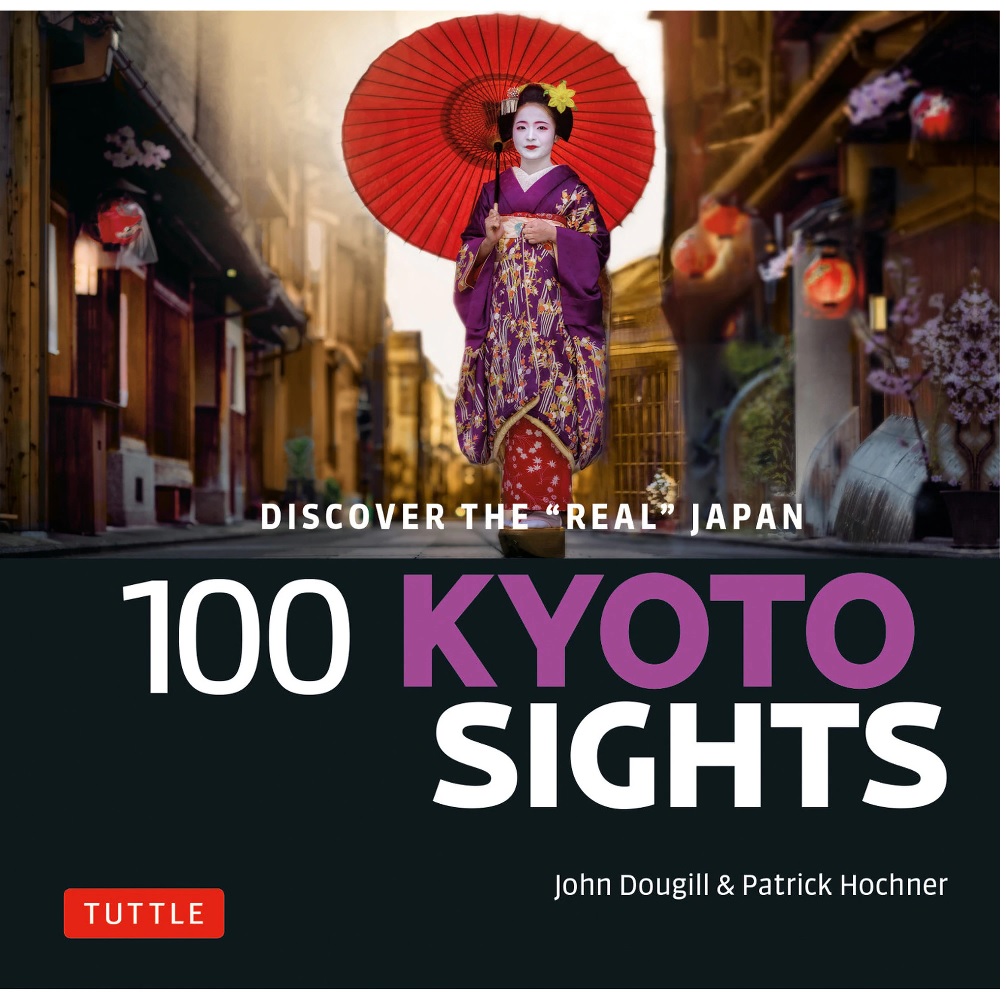100 Kyoto Sights goes by the subtitle of ‘Discover the “Real” Japan’ and that’s a lot to measure up to. After all, ‘real’ is a fluid definition, but in this context let’s think in terms of old-school Japan. I lived in Japan for two years and it is one of the most fabulous places you’ll ever visit. It’s as clean as a theme park with a society that’s just as kind as any the best customer service you’ve witnessed. Even against that backdrop, there’s an area in Japan that offers more for those tourists who want a massive overview of all that Japan’s history has to offer.

Kyoto is that city. The only exception to this description is if you want to see the mega-city, skyscraper version metropolis. If that’s the case, then Tokyo is your scene. However, if you want to see modern-day Japan, with an amazing trip back into how it looked, felt, and lived hundreds of years ago then Kyoto is the clear winner.
It’s important to point out that every city I visited in Japan was great for its own reason. Where Kyoto succeeds beyond normal expectations is that seemingly every square inch of the city is jammed with beauty. Kyoto is stacked with 17 of the United Nations Education, Scientific and Cultural Organization (UNESCO) World Heritage Sites. Depending on what source you’re looking at this is the city that has the most in the world. The United States of America has 24 of them and China has 55.

As a tourist, visiting Kyoto is more than just a temple, shrine, temple, shrine. It’s a beautiful, modern city with historical elements that are the real deal. These are complexes or buildings from a different era that are as awe-inspiring today as they were a century ago. 100 Kyoto Sights serves the dual purpose as being an armchair travelogue to being a guide that can also be used when you travel.
There are hundreds, perhaps even thousands of photos that capture each season of Kyoto perfectly. From the small street nooks, cultural experiences, festivals and the can’t-miss tourist attractions, the book as much as a primer for first-time visitors as it is to people who love the city. That’s certainly due to the fact that 100 Kyoto Sights is written by John Dougill will photographs by Patrick Hochner, both of whom have lived in Kyoto and traveled the area extensively.
The book has many maps that show various close-up areas of Kyoto and where some of the points of interest are located. 100 Kyoto Sights is broken up into four main categories, Kyoto’s Unique Culture Up Close, Exploring the City Center & The Eastern Hills, Exploring Northern & Western Kyoto, and Excursions Around Kyoto. Each of the book’s sections has a slightly different feel but is welcoming to those who are experiencing the city for the first time or traveling there for business on their 12th trip. As a one-time visitor to Kyoto, it reminded me of areas of the city that I enjoyed, as well as planting seeds for future visits.
If you haven’t visited Kyoto or are planning on going to the city the book serves as a possible list of places that you could visit. It’s a high-level view of the city with some basic inside-resident tips from people that have lived in the city. Hint: visit some of the more popular temples as early as 6:00 to escape the crowds and see them in the peak morning light. Another great hint is to not be afraid of getting lost. Some of our best Kyoto memories are from us just wandering and discovering vantage points that weren’t in the brochures. It’s also a city that you could spend years living in and still not feel like you’ve seen everything worth seeing.
100 Kyoto Sights will motivate some people to see the city and make other people upset that they didn’t experience that when they were there. For people that have been to Kyoto, the book isn’t big enough and those who haven’t been there will wonder if such a place really exists. It does, and this book is a great step towards making a trip there.
100 Kyoto Sights is by John Dougill and Patrick Hocchner and is on Tuttle Publishing.
There are affiliate links in this post.





 Facebook
Facebook Twitter
Twitter Flickr
Flickr GooglePlus
GooglePlus Youtube
Youtube